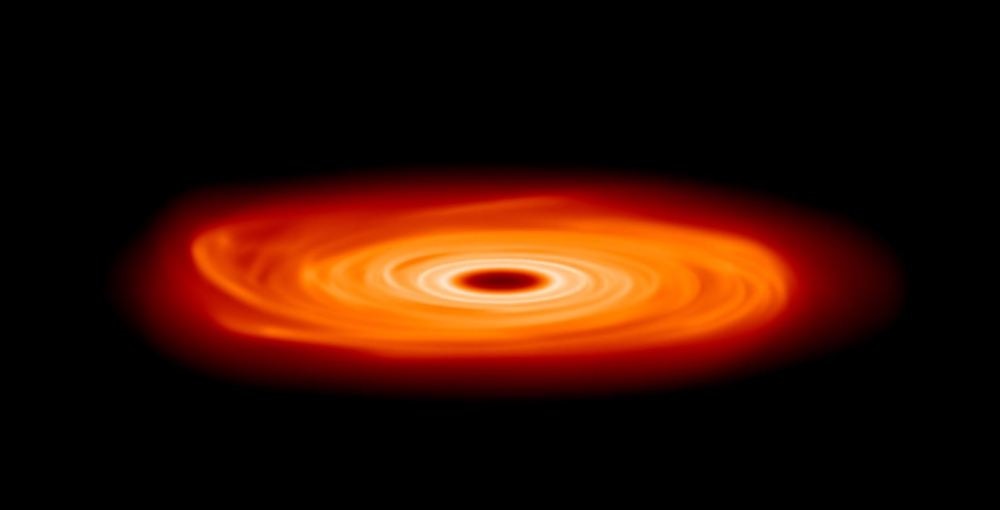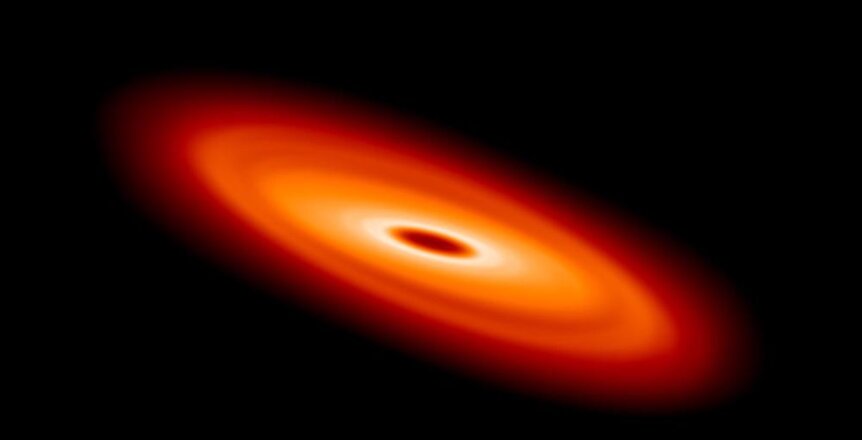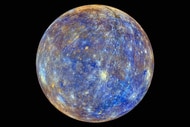Create a free profile to get unlimited access to exclusive videos, sweepstakes, and more!
Space warps can kill planetary systems before they’re born
Let's not do the space warp again.

Billions of years ago, before the formation of the solar system, our region of space was awash in a dense cloud of gas and dust known as a solar nebula. Cold temperatures forced some of that gas together and it eventually coalesced into a protostar, the beginnings of the Sun. More gas and dust began circling that star in what’s known as a protoplanetary disk or accretion disk, forming spiral bands which would eventually birth the planets, moons, and other solar system objects we have today.
As far as we know, things went off about as well as they could have, forming not only a planetary system but one which supports complex life. Had things gone a little differently, however, our solar system might not have formed at all.
A new paper by Sahl Rowther and colleagues from the Centre for Exoplanets and Habitability and the Department of Physics at the University of Warwick describes an alternative fate for newly forming planetary systems. They found that interactions with nearby high-mass objects can disrupt the formation of planets inside accretion disks, sometimes permanently. Their findings were published in The Astrophysical Journal.
“In observations of protoplanetary disks, the reasons for warps are usually unknown, but our best guess is they are the result of a stellar or planetary companion either inside or outside of the disk, or even both, that’s misaligned relative to the plane of the disk,” Rowther told SYFY WIRE.
The team simulated those warps using computer models to observe what happens gravitationally when normal formation is interrupted. They started with an ordinary flat disk which included the signature spiral structure of a planet-forming structure. They then introduce a warp of the kind which might result from these sorts of interactions with neighboring bodies. Within just a handful of orbits the spiral structure was lost, culminating in a more homogenous disk made of rings and gaps.
“We wanted to see what would happen when a planet is migrating through a disk which is young and massive. What we found is the planet will heat up the disk and get rid of the spiral structure,” Rowther said.
These warping interactions might be more common than we previously thought. According to Rowther, there are about 70 protoplanetary disks for which we have detailed observations and of those, at least six of them show signs of warping. That means that each stellar system is participating in a game of cosmic roulette for the chance to form planets without being jostled about.
Even if a system is warped by a passing star or planet, there might still be a chance for them to recover. For other systems, the warping is permanent.
“It really depends on how the warp is formed. One method involves the flyby of a star close to the disk. It interacts with the disk, warps it, then goes away. In those cases, the warp only happens once. If there’s nothing to sustain it, the disk will eventually realign itself. Once that happens, the spirals will be able to form again,” Rowther said.
Sometimes these warping events are more of a continual barrage than a hit and run. If there’s a constant external companion, such as a binary star which interacts in misalignment with the disk, those warps persist. Rowther and his colleagues believe that in those instances, the spirals won’t ever have a chance to reform. In those cases, it’s possible that things never settle down enough for planets to grab a toehold.
As much as a sunrise or sunset might be improved by a second star, if things go wrong there might not be anyone, or even any planet, for those stars to rise and set upon. All things considered, we’ll take our ordinary system over one with more excitement any day.















